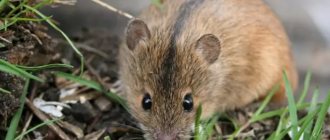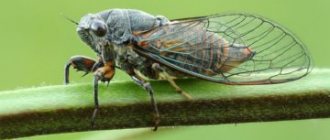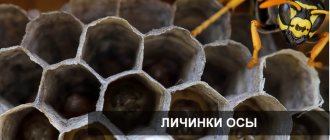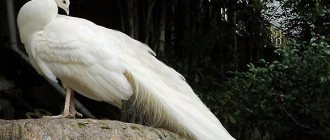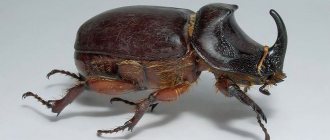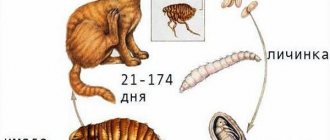- Mole habitat
- What does a mole eat?
- Can the mole see?
- The benefits and harms of moles
A small mole animal that lives underground, has an elongated body up to 20 cm long, covered with soft velvety fur of a dark gray or black shade. Due to the fact that the pile does not have any specific direction, the mole can easily move underground in any direction. This is a special adaptation to the mole's habitat.
The mole has well-developed front paws, spade-shaped with long claws. With them he rake the ground, making underground passages up to several tens of meters long per day. At a depth of about a meter, the mole makes a nest, usually under the roots of trees, lining it with moss and leaves.
Appearance description
The behavior and appearance of the mole have not been studied in as much detail as we would like. The fact is that the mammal chooses hard-to-reach places to live. But still, biologists were able to track this animal in the wild.
It is in appearance that the relative nature of the mole’s adaptability to life underground is revealed. The animal has strong front legs, which allow it to constantly dig the ground. The rounded hands resemble oars in appearance, and the wide palms are turned outward. The fingers are spread apart and end in long, strong claws.
The hind legs are not so strong; with them the mole only scrapes loose soil out of the hole. A long muzzle with an elongated nose helps the animal find food and safe places by smell. The body is covered with a short fur coat, which does not interfere with movement through narrow underground passages.
The wool grows upward and can bend in any direction. The common mole is black-brown or dark gray in color. The mammal has eyes, but they only distinguish between light and darkness. The animals are practically blind, although they do not need vision underground. The structure of the eyeball of moles differs from the organs of other animals . They do not have a lens or retina . Movable eyelids and thick fur protect the eyes from soil getting into them. Mammals have a well-developed sense of smell.
Upholstered furniture, personal items and utensils during disinfestation
Before preparing a room for pest control, special attention should be paid to upholstered items and dishes. Armchairs, chairs and sofas easily absorb sprays, they also accumulate on dishes and personal items, and chemicals left on the surface can harm you. Upholstered furniture should be vacuumed - they will be treated with hot steam or a disinfectant spray (depending on the situation), and disassembled as much as possible. Recommendations:
- try to use disposable vacuum cleaner bags - they will need to be sealed in a sealed bag and thrown away;
- cover countertops and external surfaces of cabinet furniture with cling film;
- Treat carefully as even one untreated area can reduce the effectiveness of the treatment, leaving room for insects to survive.
It is very important to pay special attention to the protection of personal belongings and, in particular, clothing - shoes, clothing and other items not infested with pests should be sealed in tight bags. If desired, kitchen utensils can be left indoors, but they must be washed first. It is also necessary to wash off chemicals after disinfestation, since they can pose a threat to the owner’s family members.
These measures will help preserve the health of all people and animals living in the apartment, and not worry that as a result of disinfestation, dangerous chemicals will remain inside and create a threat. Also, careful preparation will make the work of our company’s exterminators easier, speed it up and guarantee effectiveness.
What do you want to know?
Animal species
In total, about 40 species of moles are known. Some of them are quite common, others are very rare. They differ in appearance, habitat and behavioral characteristics. Main types:
- European or ordinary;
- Japanese shrew;
- American;
- Siberian;
- Caucasian;
- Ussuri mogera;
- star-nosed
The first species of animal is found in Europe, which is why it received its name. The common mole grows small: body length - 16 cm, weight - no more than 100 g. The Japanese shrew mammal is even smaller, and it is found on the islands of Shikoku, Tsushima, Honshu and Dogo. On the mole's muzzle there is a long proboscis with hairs that capture air vibrations. In search of food, the shrew can climb bushes and trees.
The American mole lives in Canada and the USA. These are black and gray animals with thick fur. The length of their tail sometimes exceeds the size of their body. The animal swims well and can climb trees. The description of such a mammal is similar to the Japanese shrew; biologists consider them to be related species.
The Siberian or Altai mole resembles the European one. But females are very different from males. The round body of males reaches 20 cm in length, they weigh only 150 g, and females grow smaller. Males are usually black or brown, females are gray. This species has no ears at all, but the nose has turned into an elongated proboscis.
The Caucasian mole's eyes are covered with a film. But it has a more subtle sense of smell than other species. The black, silky coat fades with age. The mole, which is called the Ussuri mogera, looks very interesting. This is a large animal compared to its other relatives: body length - 21 cm, body weight - up to 300 g. This mole has underdeveloped eyes, and it is a rare species, therefore measures have been taken to protect it in the Far East, Korea and China.
The North American star-nosed bat or star-nosed fish is so named because of its unusual nose. This part of the body consists of many tentacles, each of them has olfactory receptors. The animal loves water very much and often lives near bodies of water. He swims well and can dive.
Habitat
The mole spends almost its entire life in underground burrows, but not every soil is suitable for it. The animal carefully chooses its place. It prefers moist and loose soil. Another habitat is simply not suitable for the mole: it will not be able to break solid lumps of earth.
But sometimes soil mounds are found in fields and meadows. The mammal usually throws excess soil upward. Mole rats can be active both at night and during the day. They don't care what time of day it is, since their eyes don't distinguish between darkness and light well.
The biological rhythms of the mole are different from other animals. The mammal alternates periods of activity and rest. It prefers to work for four hours and then sleep for three. It is not easy for a mole to move underground, so it does not make long movements. Only on hot summer days does the animal break through passages to reservoirs.
Mammals do not like to be in the company of their own kind. These are loners, so they are ready to defend their chosen areas. Moles have a difficult character and often show aggression. If they had to share the land with neighbors, then the passages are dug so that they do not intersect with the paths of another individual. But if one animal dies, the second tries to quickly occupy its territory. As a mark, moles secrete a special substance - a secretion with a pungent odor.
Mammals do not hibernate in winter. The inhabitants of the underworld prefer to spend their time differently during the cold season. They dig deep holes and fill them with supplies. Only underground can moles spend the winter while remaining safe. If they get to the surface, they will become prey for eagle owls, foxes and martens.
Principles of rodent control
Being warm-blooded animals, rodents exhibit much greater mental abilities than insects and adapt more quickly to harsh conditions. Therefore, exterminators must be very creative to deal with this problem. The simplest methods of rodent control are mechanical. Spring traps, live traps and other methods can capture individual individuals, allowing them to be safely removed from the premises.
However, mechanical methods have disadvantages. Thus, they destroy only a few individuals at a time, although there can be 150 or more of them in a colony. Therefore, exterminators often use pesticides. They work on the same principle - the pest eats the poisoned bait and then dies. However, rats and mice can recognize a threat by seeing its effect on their relatives, so the range of means used changes regularly.
Preparation for disinfection (0)
- stay in the rooms being treated during disinfection;
- allow animals into the area being cleared of pests;
- If you are forced to visit rooms where exterminators work, you need to use protective equipment - masks, gloves, overalls, etc.
After the work is completed, provide ventilation for 30 minutes. During this period, it is prohibited to be inside without protective equipment. Bed linen left in the room must be washed in boiling water. Treat all hard surfaces with a solution of soda ash and soap. You should work with gloves. General cleaning is recommended to be carried out 14 days after disinfestation.
Burrow construction
The mole spends most of its life underground. Only to develop a new area does it come to the surface. The animal digs two types of tunnels:
- veins;
- search engines
The first ones are also called nests; the mammal rests and hides in them during the cold season. They lie at a depth of 10−90 cm, and their diameter is only 5 cm. Closer to the surface, the mole makes search passages. He digs them so that earthworms and other underground invertebrates live nearby. The network is extensive, it can occupy significant areas - hundreds of square meters. Moles leave traces behind them: soil rollers that appear due to the swollen arches of passages.
The animal digs the ground with its front paws, and rests against the already compacted walls of the hole with its hind paws. At a depth of 10 cm, the mammal can no longer raise its head, so it throws the soil to the surface.
These heaps are called molehills; they reach 15–25 cm in height and up to 1 m in diameter. They are usually gathered in small groups. Molehills are the only sign of the presence of moles on the site that a person can detect.
Cold fog: technology features
Hot and cold fog in Moscow is a type of insecticidal treatment that has gained popularity among many of our clients. And although the difference between these methods is not so significant, potential customers should know about them.
It is based on the same spraying of insecticide using a special generator. The resulting fog quickly mixes with air and settles in an even layer on all surfaces, including various interior items, panels and the ceiling. However, the particle sizes into which the working composition is converted differ markedly. Characteristic values for hot fog are 5-30 microns, for cold fog – 40-80 microns. Also, the insecticidal cloud of high temperature settles much longer, which allows it to penetrate deeper into small crevices and have an effective effect on insects in the most severe cases.
And of course, the main difference between these two methods is their temperature. Cold fog indicators are as close as possible to the environment.
- 100% safe for the human body and pets;
- a wide range of protection that allows you to get rid of cockroaches, bedbugs, ants and other pests;
- no stains on furniture and wallpaper after treatment;
- saving the family budget: the price of hot and cold fog is in an affordable range for everyone.
Mole nutrition
Mammals are considered insectivorous predators. Animals obtain food from loose soil, and they find it using their sense of smell. The animal’s nose is adapted to distinguish odors at a distance of tens and sometimes hundreds of meters.
Earthworms, slugs, beetle larvae - this is what the mole eats. Although his diet also includes other food:
- frogs;
- ants;
- small rodents;
- lizards;
- large beetles.
Moles do not eat plant foods, so they do not eat crops when they dig holes in gardens and orchards. Moles have a fast metabolism; they need at least 150 g of live food per day.
At the end of autumn, the mammal begins to prepare supplies for the winter. They look for a victim, immobilize it with a bite and drag it to their hole. Near its nest, the animal digs several storerooms and connects the home to them with different passages. Moles fill the storage to the maximum - they store at least 2 kg of food for the winter .
Mammal Reproduction
Moles are unsociable, but during the breeding season they make exceptions and show interest in individuals of the opposite sex. Males look for partners underground, where mating takes place. But after that they prefer to live as before. The males return to their nests and are completely uninterested in the female and their young.
The mating season repeats every year, and its seasonality depends on the habitat. It lasts only 2-3 days - until the female responds to courtship and agrees to mate. The mother carries the child for 40 days, then he is born. This is a poorly developed, hairless and completely blind mole. From 3 to 9 babies can be born at one time. Moles belong to the class of mammals, so females feed them with their milk, which is quite fatty.
The cubs develop very quickly; after just a couple of weeks they turn into real moles. The babies begin to eat earthworms. And a month later they dig their first passages underground. At this age, the child leaves his mother and learns to get his own food.
The new generation leaves the parental nest and is looking for areas to settle. Females may even bite the cubs if they want to return home. The life expectancy of a mole is 6-7 years. But in the wild, mammals die earlier due to attacks by predators and diseases.
Insects.Net will save you from annoying and dangerous pests!
If you are tired of fighting insects in your home and not a single purchased insecticide has given the promised results, do not rush to despair. The specialists of the Insekomikh.Net team will take everything into their own hands!
For our work we use only high-quality and modern equipment. All drugs undergo preliminary laboratory tests and comply with GOST requirements. Also, if you wish, you can get a preliminary consultation and voice all the important nuances. Insects will have no chance of survival!
Each client receives a guarantee for the services we provide and can be confident in their quality. You will certainly be satisfied with our joint cooperation and, if necessary, you will already know who to turn to for help.
Contacts and links on social networks can be found on the main page of the official website. Choose Insects.Net and get rid of pests in no time!
Drugs used (0)
In the fight against rodents, Tsunami is used in granules and briquettes, grain with additives, distributed in bait stations and live traps. All these means allow you to quickly and effectively eliminate pest infestations, protecting the owner of the premises and their property from destruction.
Beneficial features
The European mole has useful traits. They are expressed in the fact that the animal was previously an object of the fur trade. The mammal has beautiful and durable fur. At the beginning of the last century, moles were hunted for their valuable skins. But the massive catch led to the fact that the animal began to need protection. In 1928 alone, about 20 million skins were harvested.
In the Soviet Union, mole fur clothing became popular in the 1980s. But today in Russia mammals are not hunted, which is why their population has grown. Their numbers also increase due to mild winters, the construction of greenhouses, and the care of lawns and flower beds .
Moles improve the condition of the soil. They make it loose and saturate it with oxygen, which can save the earth from the formation of swamps. Animals destroy pests because they feed on them. Moles eat chafers, mole crickets, and insect larvae.
The principle of action of insect repellents
When destroying arthropods, the most effective are chemicals, methods that have a physical effect or biological measures of influence. Humidified hot air, boiling water, steam, or vice versa – reduced temperature, can effectively eliminate various pests. Duct tape and sticky paper trap flying insects, and installing mosquito nets on windows will help prevent them from entering the room.
Chemical methods involve the use of various chemicals intended for disinfestation (insecticides). Most of them are intended to destroy adult individuals, but often a large number of eggs and larvae are concentrated in colonies, which is why the infection recurs. Larvicides and ovicides have been developed to destroy them. All such drugs are divided into groups depending on their mode of action:
- contact. The compounds penetrate the shell of pests, entering directly into the body;
- intestinal. Affects the insect's digestive system;
- fumigants. Used to kill arthropods through their respiratory system.


